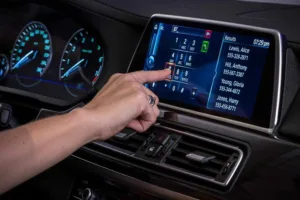The global demand for automotive display systems is expected to continue a strong growth path in 2018, according to a recent analysis from IHS Markit.
OEM production of the three primary automotive display systems — instrument cluster, centre stack and heads-up-display systems — is expected to reach 118.5 million units globally by the end of 2018, representing 9% growth in volume over 2017.
Image: Synaptics
While volume is growing significantly, the value of the market is growing even faster. In 2018, IHS estimates that these three display systems alone will bring in $13.5 billion in tier-one supplier revenue, representing 17% growth over 2017. Analyst Brian Rhodes commented:
“In the quest f
or differentiation, automakers are using displays to transform vehicle interiors into a futuristic digital user experience, with more pixels in front of consumers than ever before. While high-resolution, large displays were previously reserved for luxury applications only, declining ASPs and increasing consumer demand and production volumes are enabling mass-market car brands to standardise displays that were optional only a few years ago”.
Demand for more displays in automotive applications is strong but a major enabler to this growth comes from the supply chain. Large global display panel manufacturers in Asia have recently invested heavily in automotive display panel production in order to continue sales growth as display markets in other areas have slowed, such as smartphones and tablet PCs.
Global shipments of automotive display panels are set to increase by 11%, reaching 164 million units in 2018, following an equally strong 9% growth in 2017, which saw shipments reach 148 million units. Senior director Hiroshi Hayase added:
“As
vehicles adopt more technology, more new display use-cases become viable and new display applications are born. In addition to strong growth in the primary display market, we also expect strong growth in display mirrors, rear-seat entertainment and even in aftermarket systems, as buyers clamour for more digital interfaces”.
As an example, global display shipments for rearview mirror applications are forecast to soar 52% in 2018 to 1.6 million units, beyond the one-million-unit mark set just last year. While automakers are keenly aware of the growing demand in this sector, aftermarket mirror manufacturers are responding quicker to the trend and represent a majority of today’s global production.

